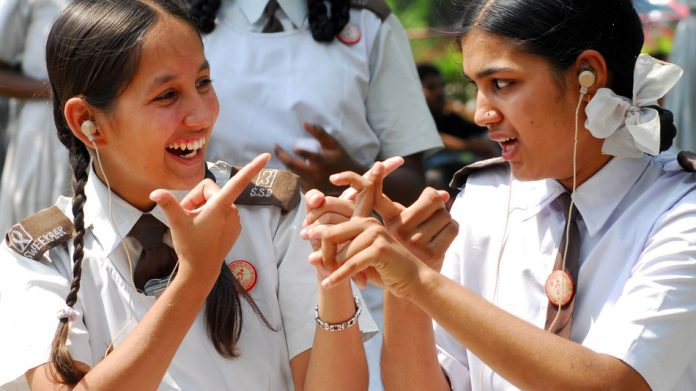India has 122 major languages and more than 1500 other languages. This means that sign language will vary from region to region making communication challenging.
The recent launch of the second edition of the Indian Sign Language dictionary in New Delhi saw the rise in demand for making sign language official. The Minister for Social Justice and empowerment, Thawar Chand Gehlot considered the matter to be under examination. Such a step would require the backing of adequate interpreters and trainers to make it a widely used medium of communication. Therefore the government has no immediate plan to act on it.
AS Narayan, the President of National Association of Deaf has repeatedly stated that the social justice ministry must work towards making sign language official for better education and employment opportunities in order to give a chance to the disabled to run alongside regular people.
There are 50, 71,007 deaf people and 19, 98,535 with speech disability in India, as per the census in 2011. However, data shows that now there are only 325 interpreters listed with the government’s Indian Sign Language Research and Training Centre (ISLRTC) out of which only 263 people are active interpreters.
The release of the second edition of the Indian Sign Language Dictionary is also seen as a step to expand the reach of the language and its functional use. The first edition released in March 2018 consisted of 3000 words.
Developed by the ISLRTC, the second edition of the Dictionary consists of 3000 additional words which capture a more diverse range of users across various categories ranging from everyday terms, legal, academic to medical and technical terms along with graphic representation.
“Lack of knowledge of sign language in our country has meant that deaf people drop out of the education system rapidly, and despite quotas in government jobs, they are unable to benefit from them,” said Avnish Kumar Awasthi, in an article on BBC. A senior bureaucrat at the Ministry of Social Welfare, Mr Awasthi wants to make sign language training compulsory in order for teachers to ensure that deaf students can study alongside other children in regular school.
The sign language is being developed in both print and video format. Around 1000 videos have already been uploaded on the ISLRTC’s YouTube Channel.
Internationally, sign language has been given utmost importance as we advance through the years. Airlines have ASL interpretations on flights to ensure safety measures are inferred by everyone aboard. Movies like ‘Wonder’ and ‘Ice Age: Continental Drift’ consist of American Sign Language interpretation, making it possible for people with disabilities to have an enjoyable experience. Prototypes of devices are being made for translating American Sign Language into English by Michigan State University researchers. The road to the future is already being paved internationally, and India isn’t far from bridging the communication gap between differently abled people anymore.






























